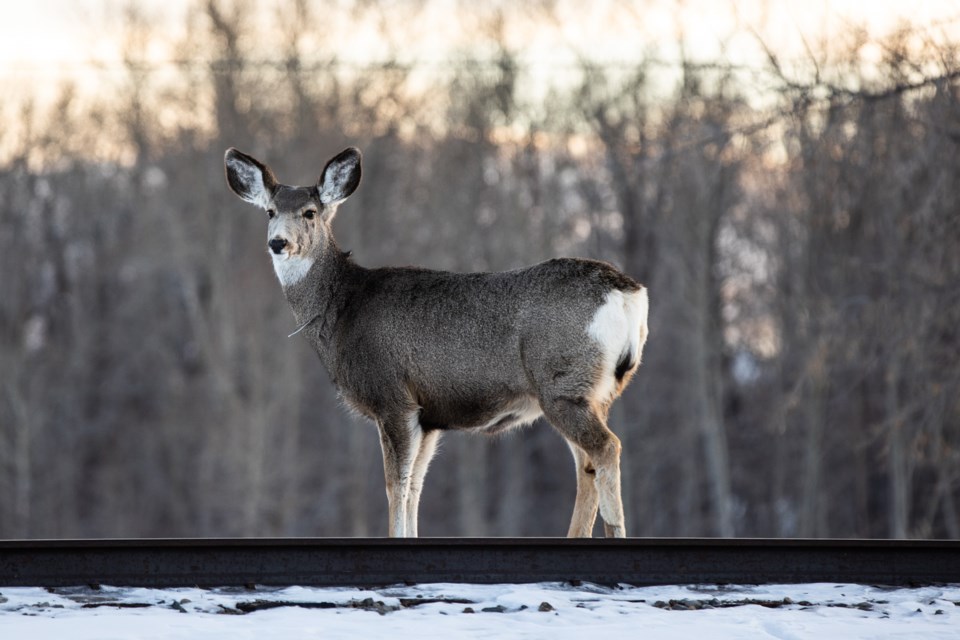I suppose you can argue whether the deer are in our domain or we set up shop in their territory, but there’s no denying they’ve found rather favourable conditions in this urban oasis.
The wildlife expert Okotoks council recently consulted described the situation as the deer living on the public’s dime, which I assume meant that we’ve created a most welcoming environment for them. Now, I’m not sure whether it’s fair to say we’re being taken advantage of, but it’s clear that food is abundant and predators are virtually non-existent, which sounds like a pretty sweet situation for any species of wildlife.
I’m far from a wildlife expert, but it stands to reason that species thrive when conditions are favourable, so if it continues to be that way here, it’s more than likely the 124 deer identified in a count undertaken earlier this year will be substantially higher during the next roll call.
I’ve seen a lot of fawns following their mothers around over the last few months, so I wouldn’t be surprised if this year’s count is already outdated, which begs the question: If they’re considered a nuisance (or worse) now, what happens should their population double or triple, which doesn’t seem like it’s too far-fetched of an idea?
Not necessarily grasping the distinction between public and private property, the deer are chowing down wherever they please, which has caused enough consternation to prompt Town officials to strike a task force and devise a multitude of strategies to limit negative interactions. My frame of reference is limited here, but whatever has been undertaken thus far has only done so much to rectify the situation; Town council members wouldn’t still be debating it if the issue had been put to bed.
During the most recent discussions councillors stopped short of bucking up for aversion conditioning, a tactic that aims to put deer on the defensive and show them who’s the alpha in these parts. I imagine that approach could be useful in reducing the number of negative interactions between deer and humans or pets, which is one of the biggest concerns surrounding our four-legged friends, but I don’t suspect it would have much impact on their numbers or the damage they inflict on landscaping.
It seems to me that as long as the environment remains conducive, their population will grow and they’ll become an increasingly bigger nuisance, which will require even greater intervention in the future. The easiest thing would be to wait until that time, so whatever action is ultimately taken will be welcomed, or at least tolerated, because the issue would have reached a boiling point.
Although we’re headed in that direction, it doesn’t have to be that way. I’m certainly not suggesting a cull — I’m a suburbanite softie who’s a sucker for their big ears and inquisitive faces — but a sterilization program would limit the population and at least ensure the issue doesn’t grow.
That wouldn’t address the negative impacts on humans, pets and gardens, so more action would still be necessary, but if we don’t keep their numbers from exploding, the hand wringing will only intensify in the months and years ahead.




